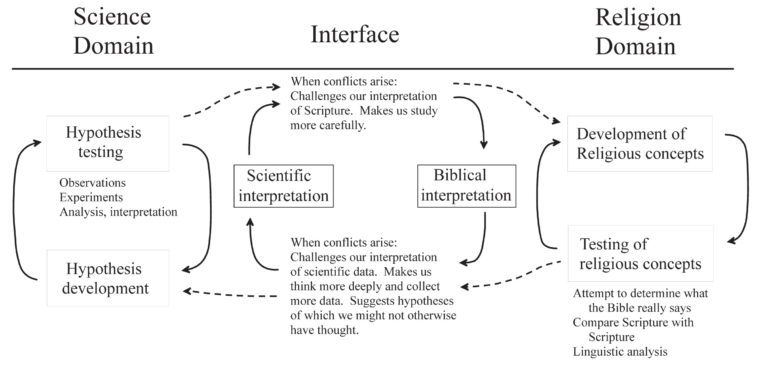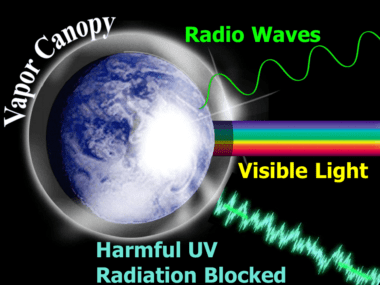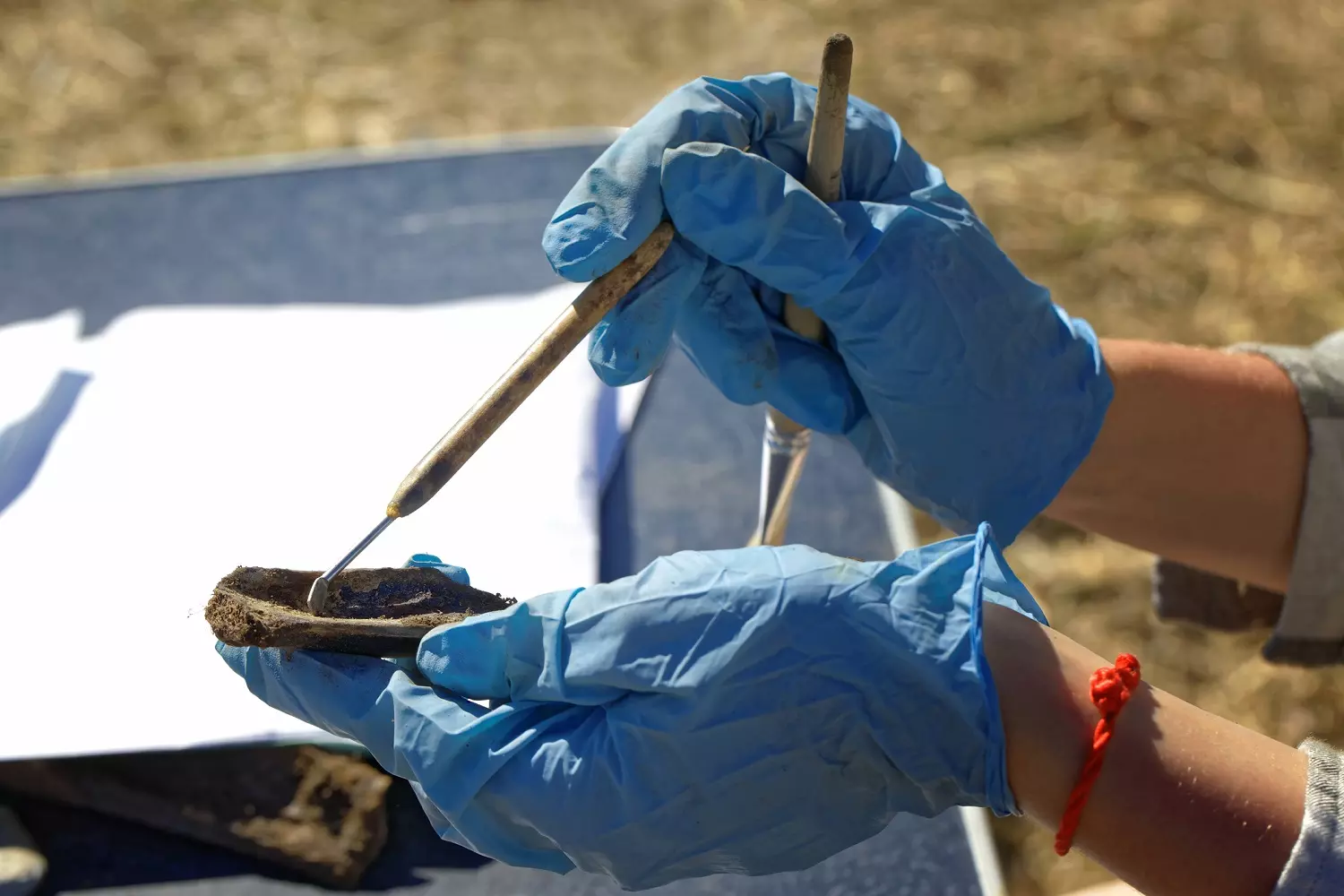[Originally published as part of The Philosophy of Creation Science]
Young-earth creationists are interested in science because we want to better understand the Creator’s world in light of His Word. However, science is an ongoing enterprise, and new data is turning up all the time. Often, this data falls right in line with our expectations based on a young-earth perspective. Sometimes we can explain it better than our old-earth colleagues! Other times, the data is harder to explain from within a young-earth context. Just what do creationist researchers do with incoming data?
Where Does the Bible Fit in the Scientific Process?
A Model of Integration
Paleontologist Dr. Leonard Brand has developed a helpful model for understanding incoming data.¹ This perspective has been used by creation scientists for decades. It helps to explain data and keep biases (whether secular or religious) in check. Advocates of this model propose that if scientific and biblical data are properly understood, harmony will be found between them. They also hold the scientific method to be a powerful and effective way to solve the mysteries the Creator has hidden throughout creation. Dr. Brand believes the answer to the concern of biases is the integration of religion and science, with God having priority in our thinking. The diagram below best illustrates the model he developed:
This approach holds that the biblical text is not a science textbook. It is, instead, to be understood according to its obvious meaning unless a symbol or figure is employed. This approach accepts the events described in the Bible as real and historical. Science is viewed as an open-ended search for truth; it cannot settle for rules that will restrict that search. (Naturalism is one example of such a rule, as it dictates that supernatural intervention has not happened in the universe at any time, past or present.)
Brand’s model also acknowledges, however, that all scientific and biblical models are subject to the limited knowledge and fallibility of sinful human beings. We can best tackle conflicts that arise between the clear teaching of Scripture and current scientific models through further scientific investigation. At the same time, we must be careful to keep in mind that our understanding of Scripture is not unerring; it is subject to reassessment within the confines of Scripture.
Using Religion and Science in the Quest for Truth
Humanity has wrestled with the question of how science and religion should interact for centuries, perhaps as early as the time of Copernicus and Galileo. We need to make sure we are careful to learn from the other side of history. Church leaders persecuted scientists and their ideas not because they were against Scripture, but because the leaders were concerned with scientific theories violating their own understanding of the world, not the Scripture’s understanding of the world.
Dr. Brand’s model recognizes that the methods of scientific research and religious study are different, and we should not conflate them.
Religious concepts are not directly tested by scientific methodology. Scientific concepts are not directly tested by religion.
This is because it is possible for us to misunderstand data from either source. Keeping the conclusions of each temporarily separate in our minds allows us to dig deeper into both science and religion without accepting the first explanation that pops into our heads.
The important part of this model is integration, especially when conflicts between religion and science occur. This triggers more careful research in both areas. Science and religion can both provide ideas that we can utilize to generate new ideas, hypotheses, or predictions. As far as science goes, the actual act of doing science is largely indistinguishable from that done by our conventional colleagues. The only differences are the types of questions we ask, the data we are likely to take notice of, and the types of explanations we consider worth investigating.
There are dangers we face as we try to synthesize scientific data with historical data gathered from the pages of Scripture. For example, what happens when we hold a religious view that is not biblical, but dogmatic, and science disproves it? Are we to let our faith in the Bible as a whole be disproved unnecessarily?
What Would Change Our Mind?
 At one time, most young-earth creationists believed in the vapor canopy model. This idea proposed that the “firmament” made on the second day of Creation was a layer of water vapor that had once encircled the earth. Proponents thought that the canopy had fallen at the start of the Flood, providing enough rainwater to last 40 days and 40 nights.
At one time, most young-earth creationists believed in the vapor canopy model. This idea proposed that the “firmament” made on the second day of Creation was a layer of water vapor that had once encircled the earth. Proponents thought that the canopy had fallen at the start of the Flood, providing enough rainwater to last 40 days and 40 nights.
However, although the canopy theory was based on the Bible, it was deeply flawed.² If the canopy had existed, continual divine intervention would have been needed to stop the earth from overheating. Although it is possible that God could have created a water canopy above the earth, and supernaturally cooled the atmosphere, this is not implied by the text.
Christians must be careful not to ascribe to God that which He has not attributed to Himself. Instead, we need to reevaluate our scientific model, and the text upon which it was based, and ask God for clarity. Creationists reassessed the Scriptures and came to the conclusion that the Biblical text did not necessitate a vapor canopy.
To be continued
References
- Brand, L. R. (2006). “A biblical perspective on the philosophy of science.” Origins, 59, 6-42.
- Worraker, W. (2020). “Heat Problems Associated with Genesis Flood Models—Part 3: Vapour Canopy Models.” Answers Research Journal, 13, 69–94.






